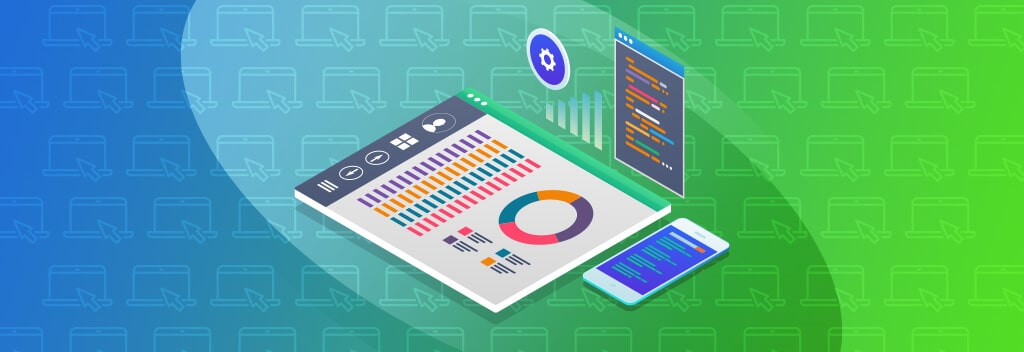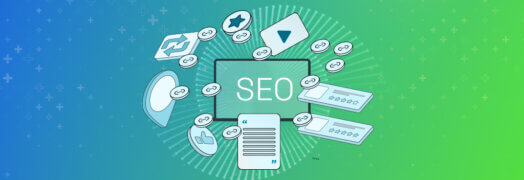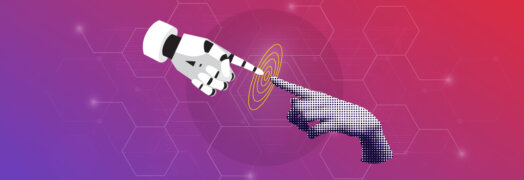Your B2B software or SaaS product is cutting-edge, innovative, and unique. It’s changing how your clients do business and streamlining everyday tasks. All that’s left is to communicate this to your ideal buyers effectively.
Whether you are a stealth startup or a seasoned software provider, here are the most effective B2B marketing priorities for B2B SaaS firms to increase revenue.
Modern, cohesive digital presence
Your B2B SaaS brand’s digital presence must accurately reflect the value your platform or service provides to end users. A neglected or tired digital presence for a B2B software brand sends the message that your company doesn’t communicate well and doesn’t understand what end users need.
A modern, cohesive digital presence that unifies all your digital platforms and communicates your brand is forward-thinking is crucial to building trust throughout the buyer’s journey. All channels must have updated branding and a consistent look/feel/messaging across all social media, email campaigns, ad creatives, and B2B website.
We recently worked with ReflexAI, a provider of AI-based software for crisis line training, to build a comprehensive digital presence with a professional logo, polished B2B website, social media visuals, display ads, and more. Check out their digital platform:
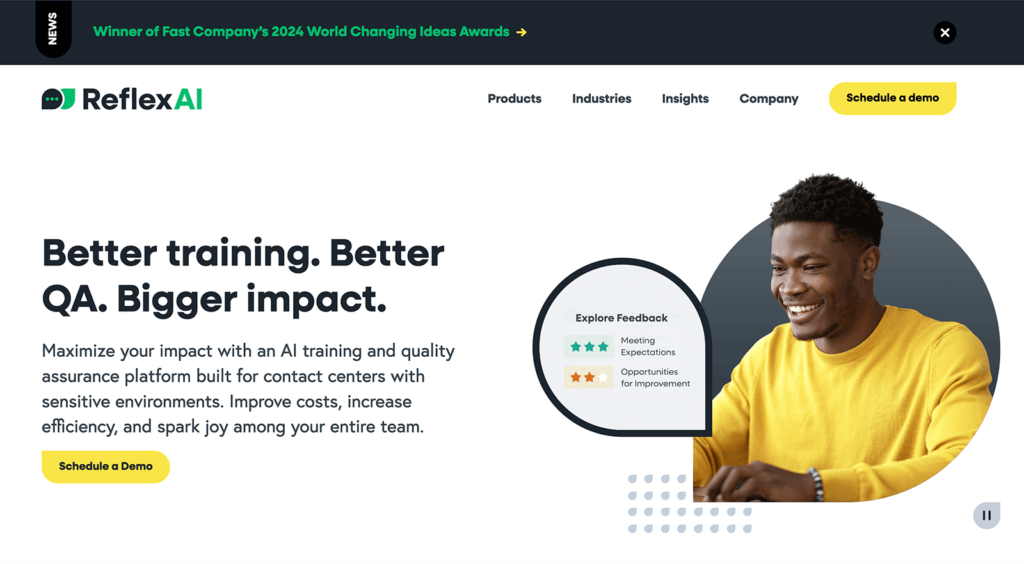
The best place to start with a modern digital presence is an…
Easy to navigate B2B website
It’s as simple as this: a good user experience (UX) and user interface (UI) on your B2B website indicate a good SaaS platform. Although software and website design are quite different, to your target market, they are the same. As such, having an easy-to-navigate B2B web design for your brand correlates to visitors believing your software platform is also easy to use.
At Bop Design, we’ve partnered with many B2B SaaS and software firms to update their web designs. Our focus is always on intuitive website navigation and a seamless user flow throughout the B2B web design. Many software firms serve a variety of niches, have multiple decision-makers during the buying process, and have differing use cases – which can cause for complicated, hard-to-use websites if not addressed properly.
See the recent software and SaaS website designs we’ve launched.
In addition to easy-to-follow navigation and well-thought-out user flows, we recommend incorporating these into your B2B website…
Product demos or animations
Buyers today are savvy about software and SaaS technology and it’s well-known that SaaS companies often sell or market software or features that aren’t technically built yet. It’s important to differentiate your SaaS technology from those without ready-to-go platforms by showcasing images and visuals of your actual tool. In addition to seeing what your platform looks like, it builds trust with buyers that the tool does exist and is ready to use.
While screenshots of the platform work well, we recommend mini demo videos that take the buyer through the software interface to show how it works. These mini demos are typically recorded and only 1 – 2 minutes or less. These recorded demos do not replace live demos with your sales or product team. They are, however, great tools that allow buyers to learn more and build familiarity with your platform. By having mini demos on your website, you can make the sales process more efficient. The prospective buyer is more educated, allowing the sales team to skip the basics and tailor the conversation and full demo to the specific needs of the prospect.
ClickUp does a great job with a mini-demo, which you can view here.
In addition to a preview of your SaaS or software platform, it’s important to discuss…
Implementation and the onboarding process
A major objection to switching software providers is often the perceived ramp-up or implementation time. Whether your SaaS offering is complicated or plug-and-play, it’s critical to address what the implementation looks like and what new clients can expect in the onboarding process. This doesn’t need to be an in-depth discussion but should cover what are the steps to implement your solution, how easy it is to get going, and what’s the commitment before they can expect an ROI.
MailChimp provides helpful information on the implementation process and that with certain plans, customers have access to a Customer Success Manager.
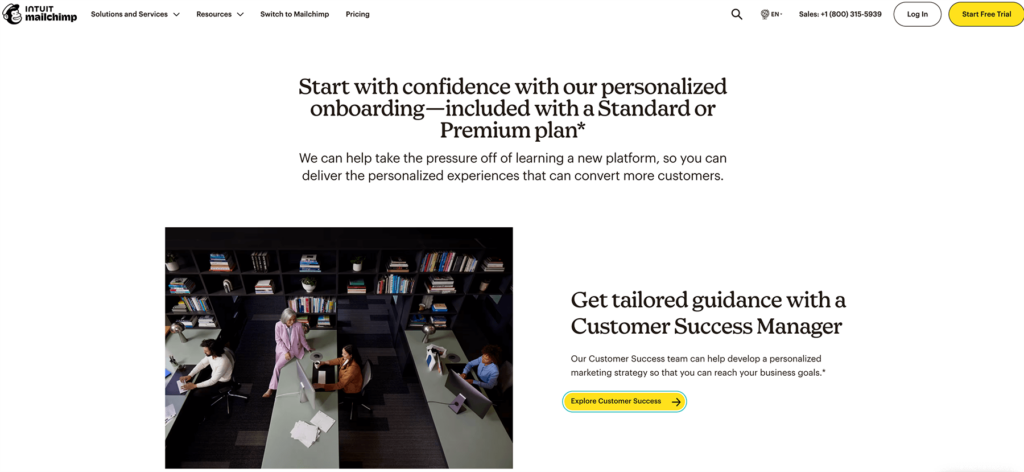
Your B2B website design should include a section on what to expect for onboarding, but you can also cover this in more detail in blog posts, nurturing emails, social posts, and definitely in…
Client testimonials and client logos
Potential buyers want to know who is using your software solution and what their experience is like. Assets like client testimonials and client logos featured in your B2B marketing materials and on your website are essential to building trust with buyers. These work especially well if you have high-profile clients, or your solution has a niche industry or specific application.
The best client testimonials provide insights into the actual experience with your brand’s solution and state the benefit to the user or company. While your software may have a variety of applications, the more specific a testimonial, the more valuable it is in building credibility.
A great example of client logos website section is on the Accurate website. Accurate provides employment background check services and showcases client logos prominently on its homepage.
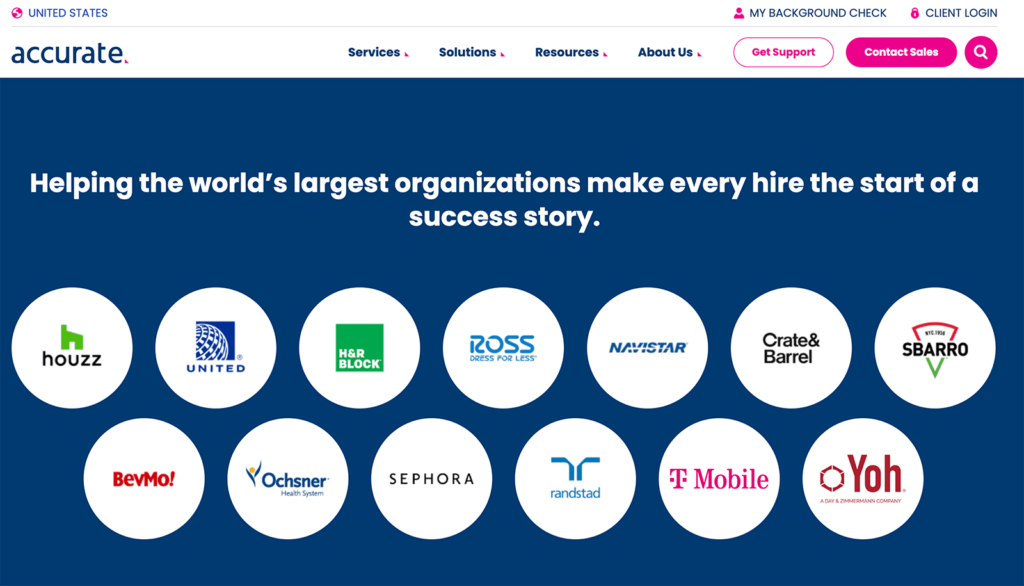
Knowing what users think of software is important, but so is understanding the…
Integrations with existing software
For many B2B firms, their technology stacks are highly integrated to provide the most value to the business. Often, how your software or SaaS solution integrates with a buyer’s existing software is a key factor in the purchase of a new tool.
How you showcase or demonstrate integration capabilities can vary – whether it’s a dedicated webpage on your B2B website or if it’s a shorter section on your main platform page. What’s important is to make sure integrations are easy to find. This can be the primary concern for a prospective buyer and could potentially take your company out of the buying process if it’s not readily accessible to buyers.
Business intelligence platform innovator, Pyramid Analytics, has a dedicated section for its technology integrations.
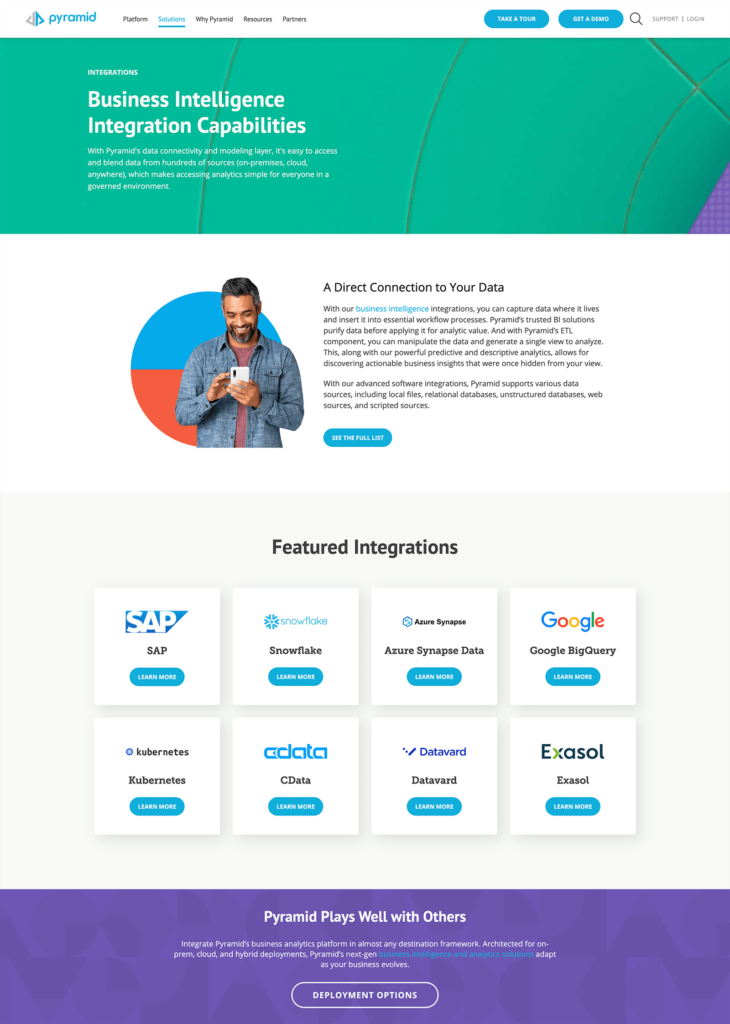
Along with how it integrates with other software tools, one of your top priorities should be presenting well-crafted…
Case studies or use cases
Case studies or use cases are the ideal time to get into the nitty gritty and show actual results. Ideally, you will have a case study or use case for each industry or application for your SaaS solution. Professionally drafted and designed case studies are most effective when they have concrete data as well – including data on hours saved, revenue increased, projects completed, etc. At their core, these case studies must demonstrate the true value of your software application.
Zeotap is an example of a SaaS brand that has great case studies featuring impressive statistics, client testimonials, and videos.
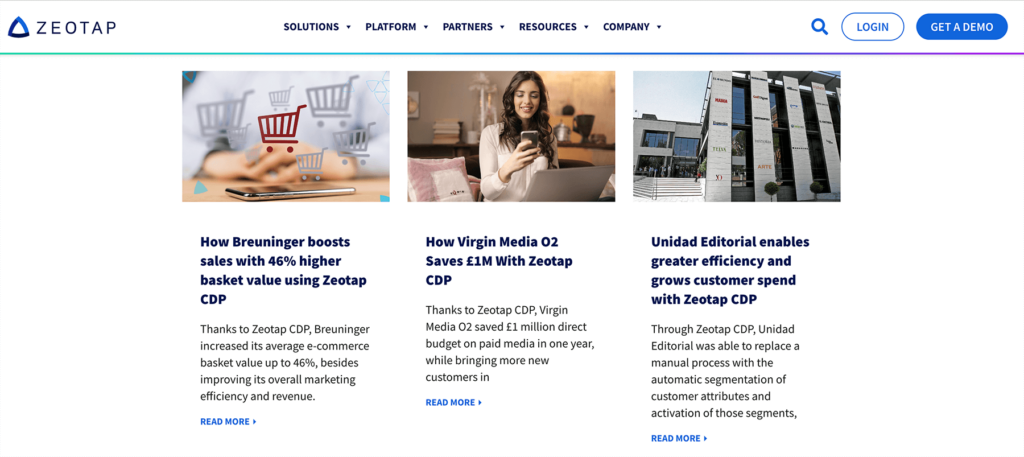
Other content you can offer buyers as they navigate the decision-making process is…
Educational content
How do you educate prospects that you don’t know yet? By creating educational or thought leadership content. Many potential buyers will sleuth around on your B2B website 5 or 6 times before they share any of their contact information with you. Why? Because they aren’t ready to speak to your sales team yet – for any number of reasons (securing budget, existing software contract, new hires onboarding, new division opening, etc.)
The key here is that this content is educational, not necessarily promotional. Consider that your buyer is likely shopping around and evaluating a few different SaaS solutions. They may be new to the buying process, or they may be new to this type of software altogether. Providing self-guiding educational materials sets your brand up as a helpful partner who takes the time to answer questions and explain concepts and applications. Content can be specific to your platform and share insights on how to select software platforms, determine g software needs, evaluate features and capabilities, and even set budgets. By educating prospective buyers, you are in better control of the sales process when it comes to that time.
For example, Talent Intelligence Software is a newer tool used by HR leadership in enterprise organizations. To help educate the buyer, we developed “A Buyer’s Guide to Talent Intelligence Platforms” which became the best-performing piece of content for retrain.ai.
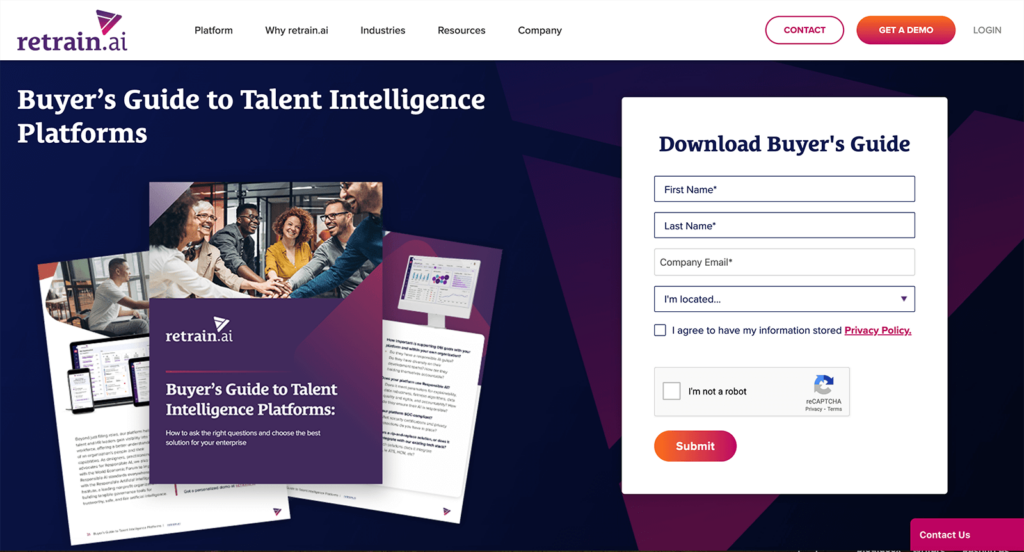
This type of educational content guides buyers along in their decision-making process, but also sets the stage for…
Customer success and retention
Another way to build credibility and trust with your ideal buyers is by discussing how you’ll take care of them once they become clients. We take the stance that you need to educate to retain – especially when it comes to software solutions. It seems like every day a new competitor is coming out with an exciting new feature or functionality. If you aren’t taking the lead to advise on upgrades, new features, and integrations – your existing clients may think you don’t offer any of these.
The best way to retain your clients is to show them how to get more value from your software solution. Focus on creating content and campaigns that describe what services, tools, and resources are available to the client to ensure internal adoption, how to reach customer support and their internal success advisors, where to find training, etc.
Make it clear and easy
We’ve covered a slew of B2B marketing priorities for SaaS and software firms but the common thread is to make the value of your solution clear and make the buying process easy.
